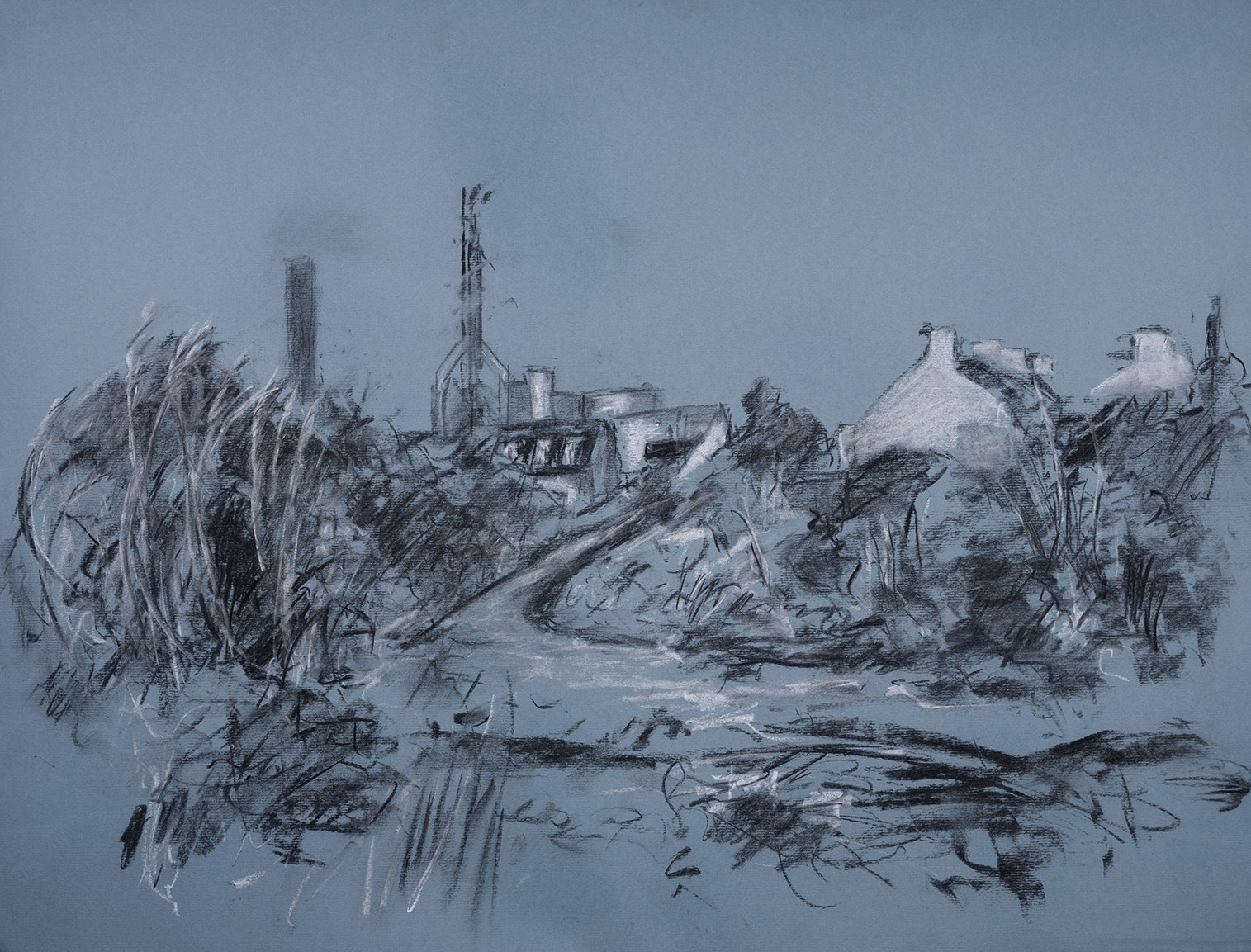
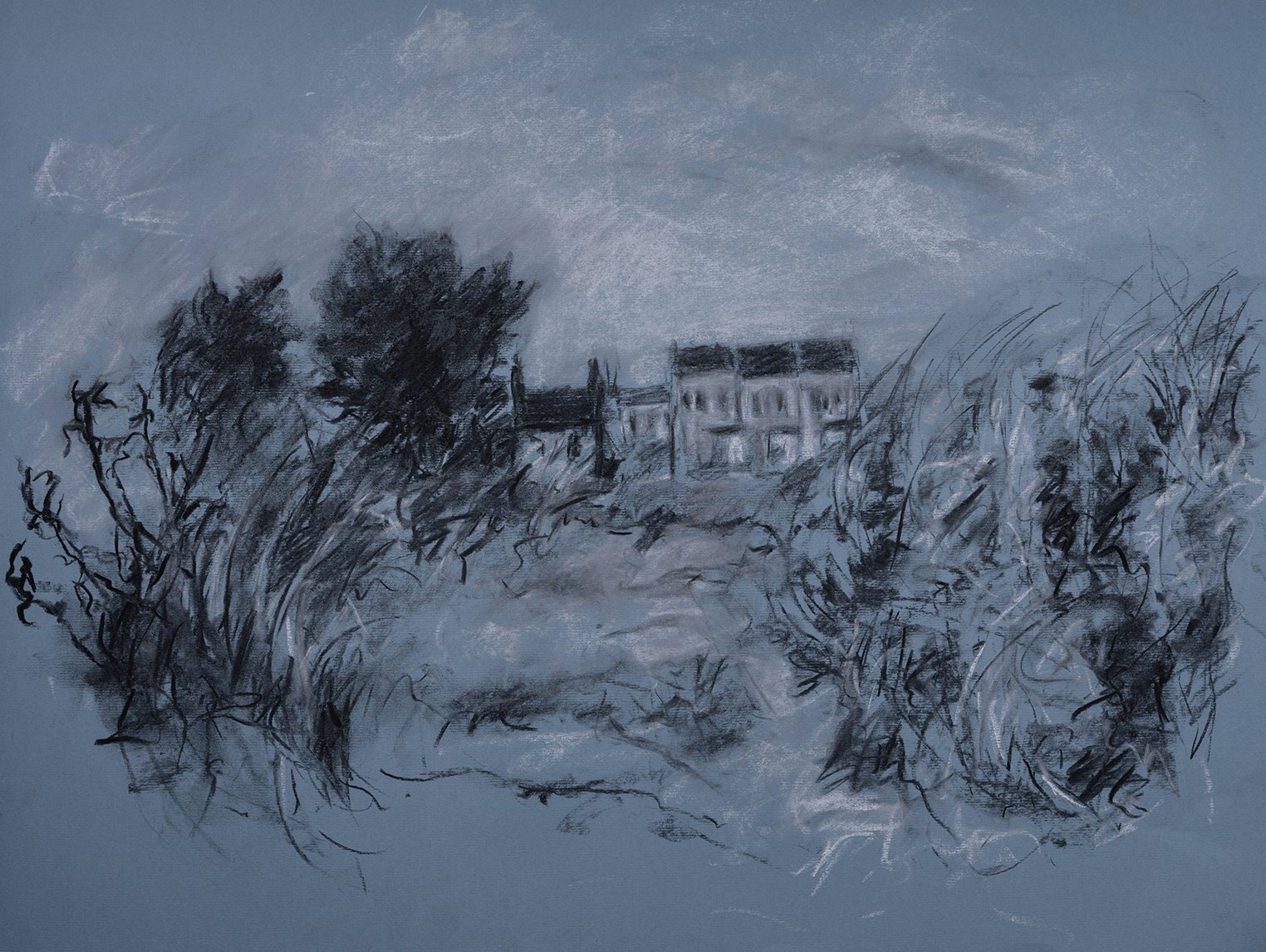
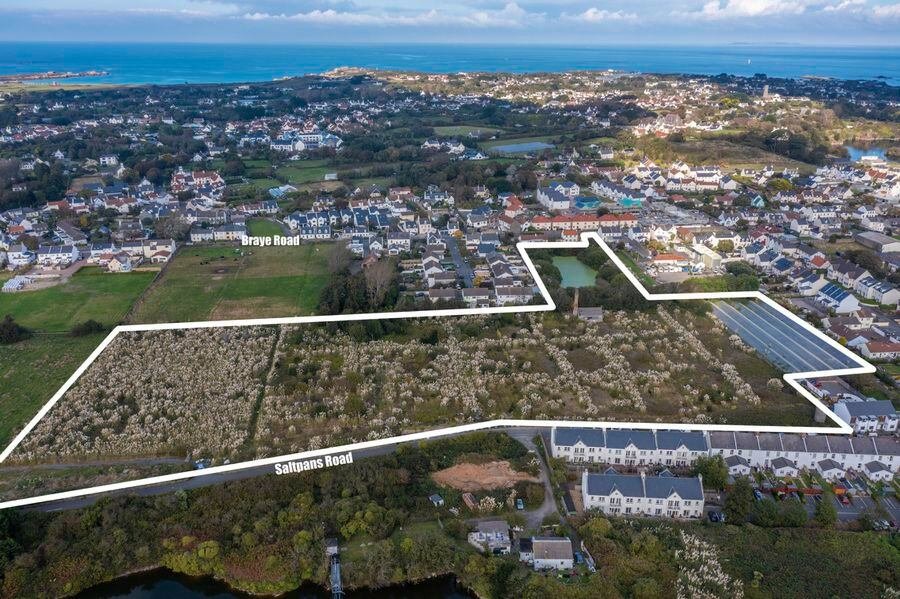
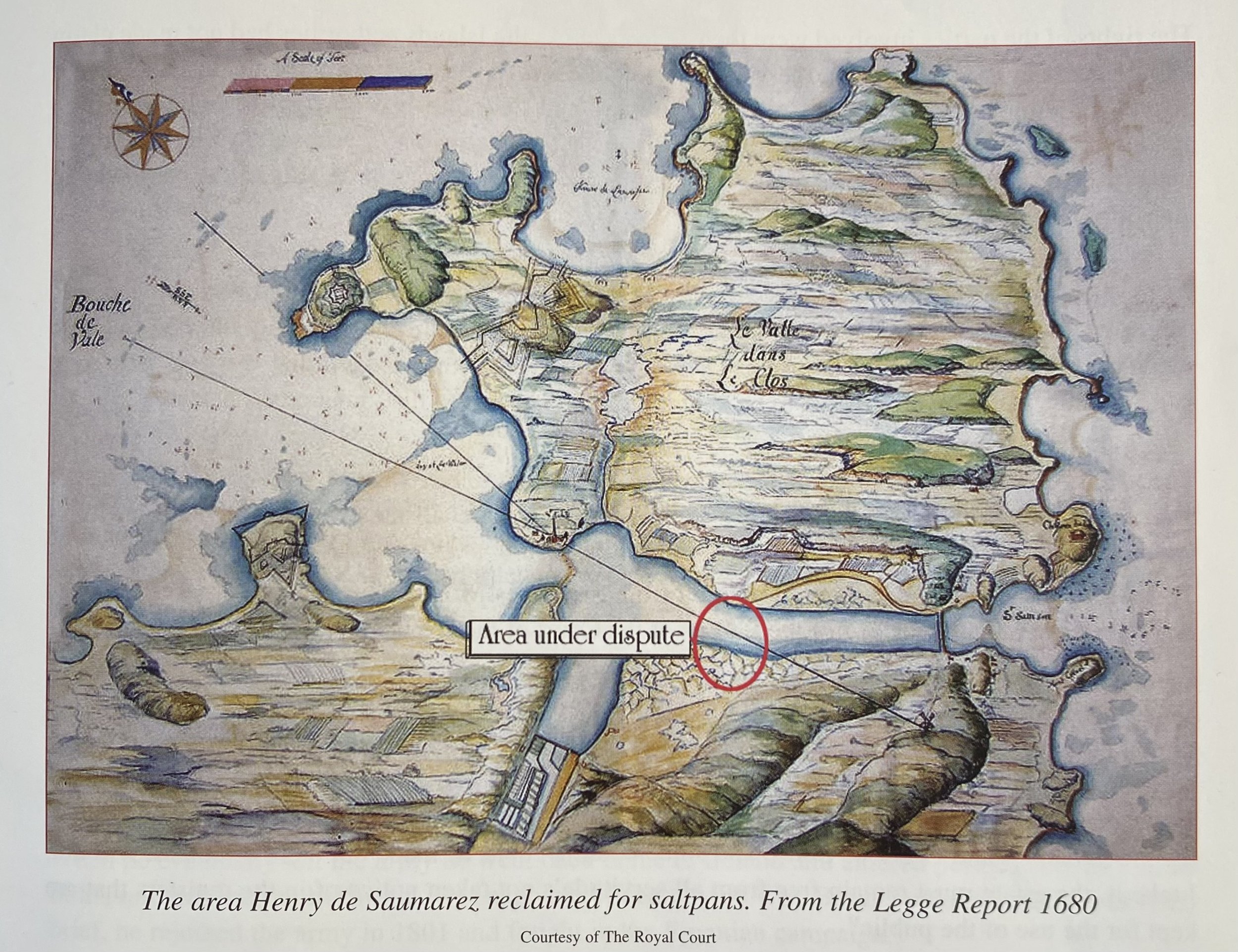
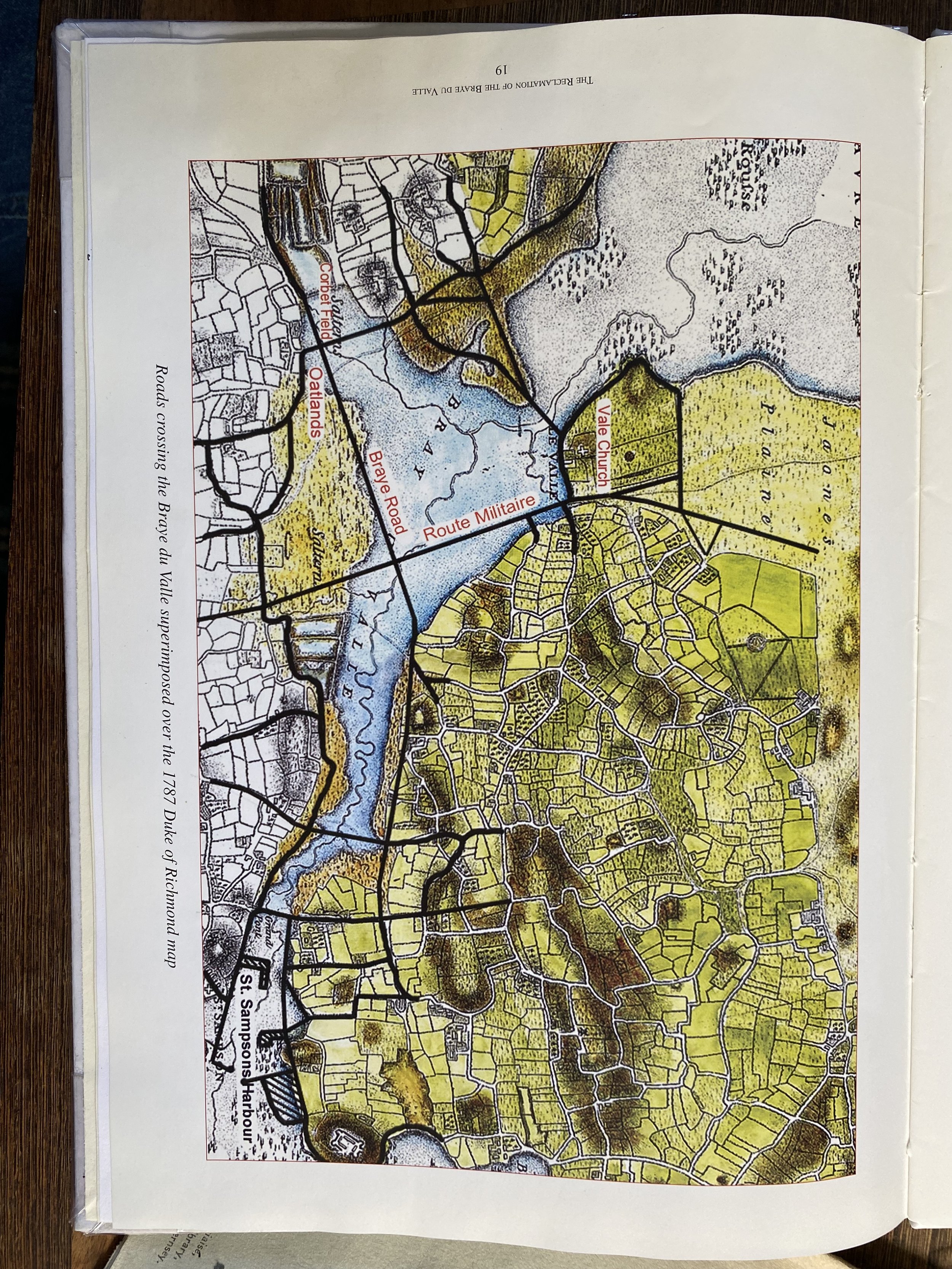
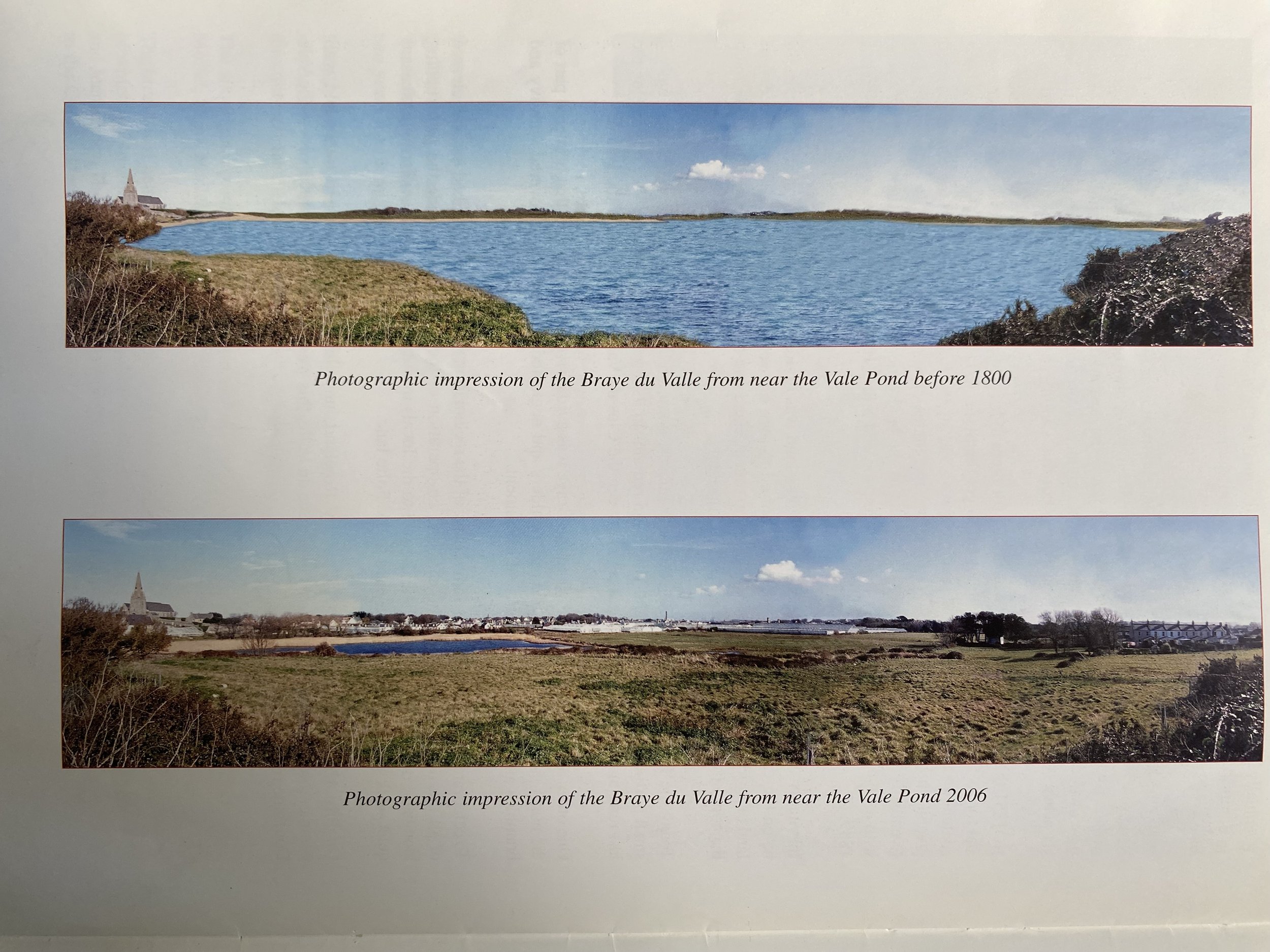

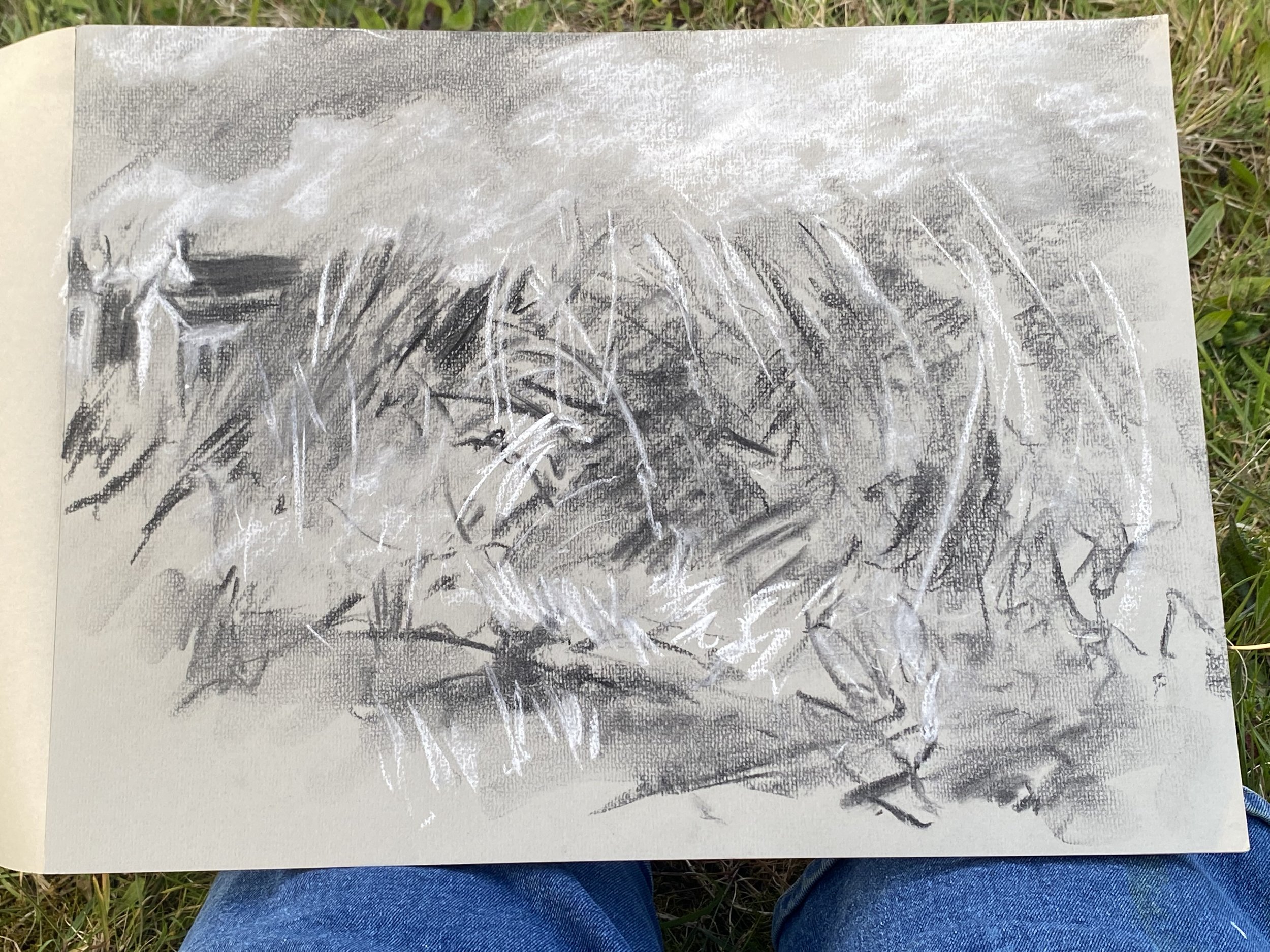
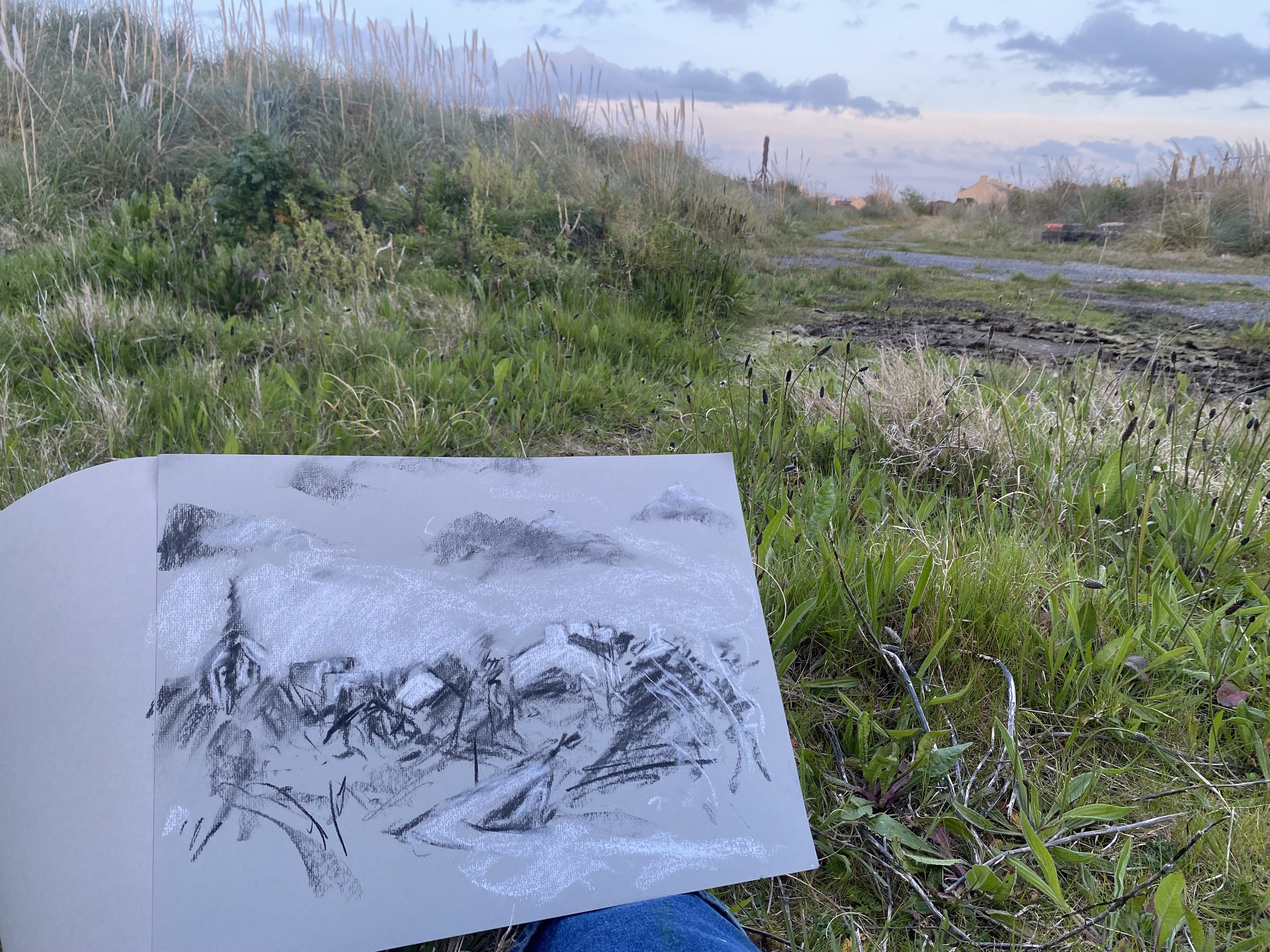
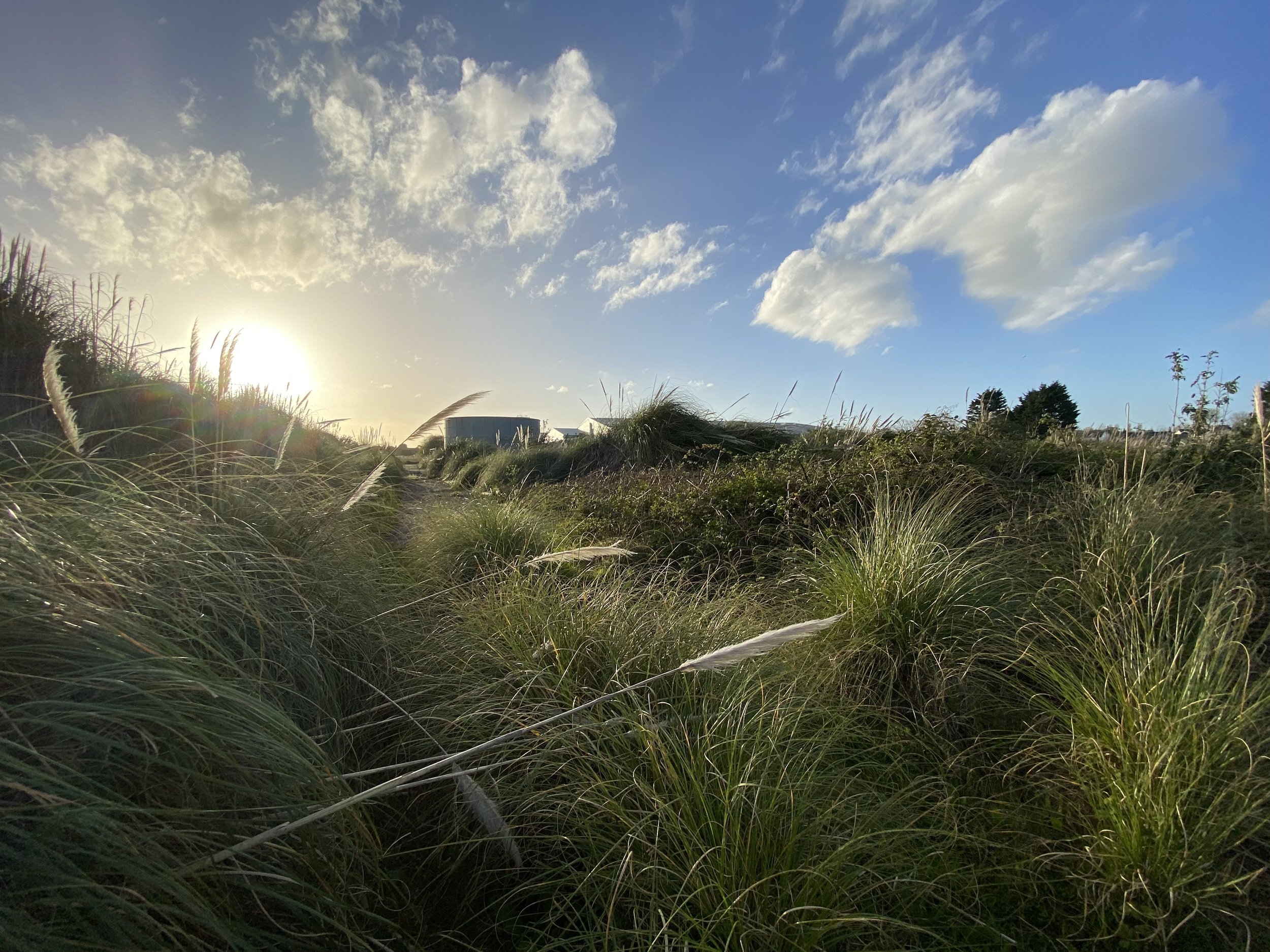
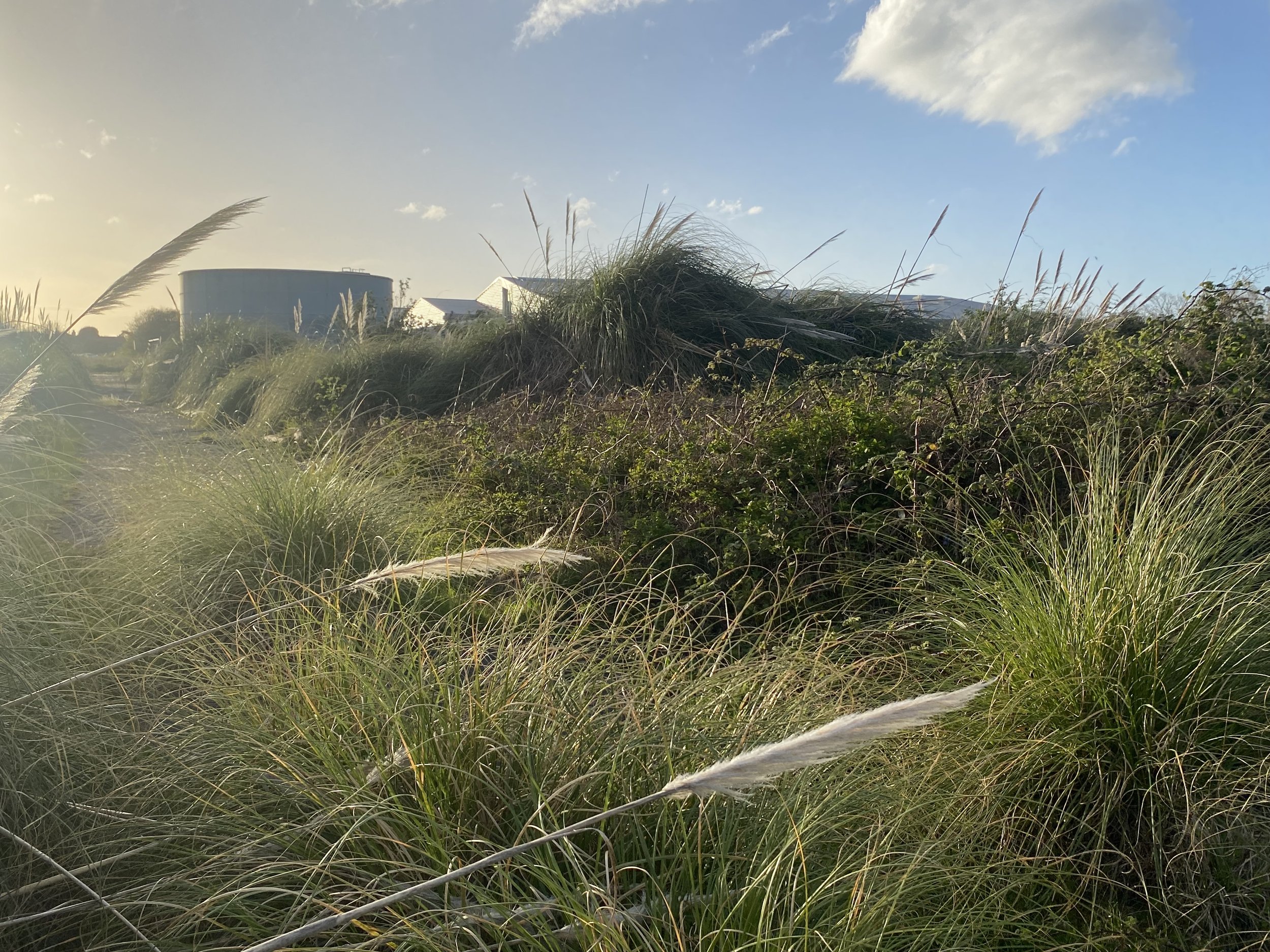
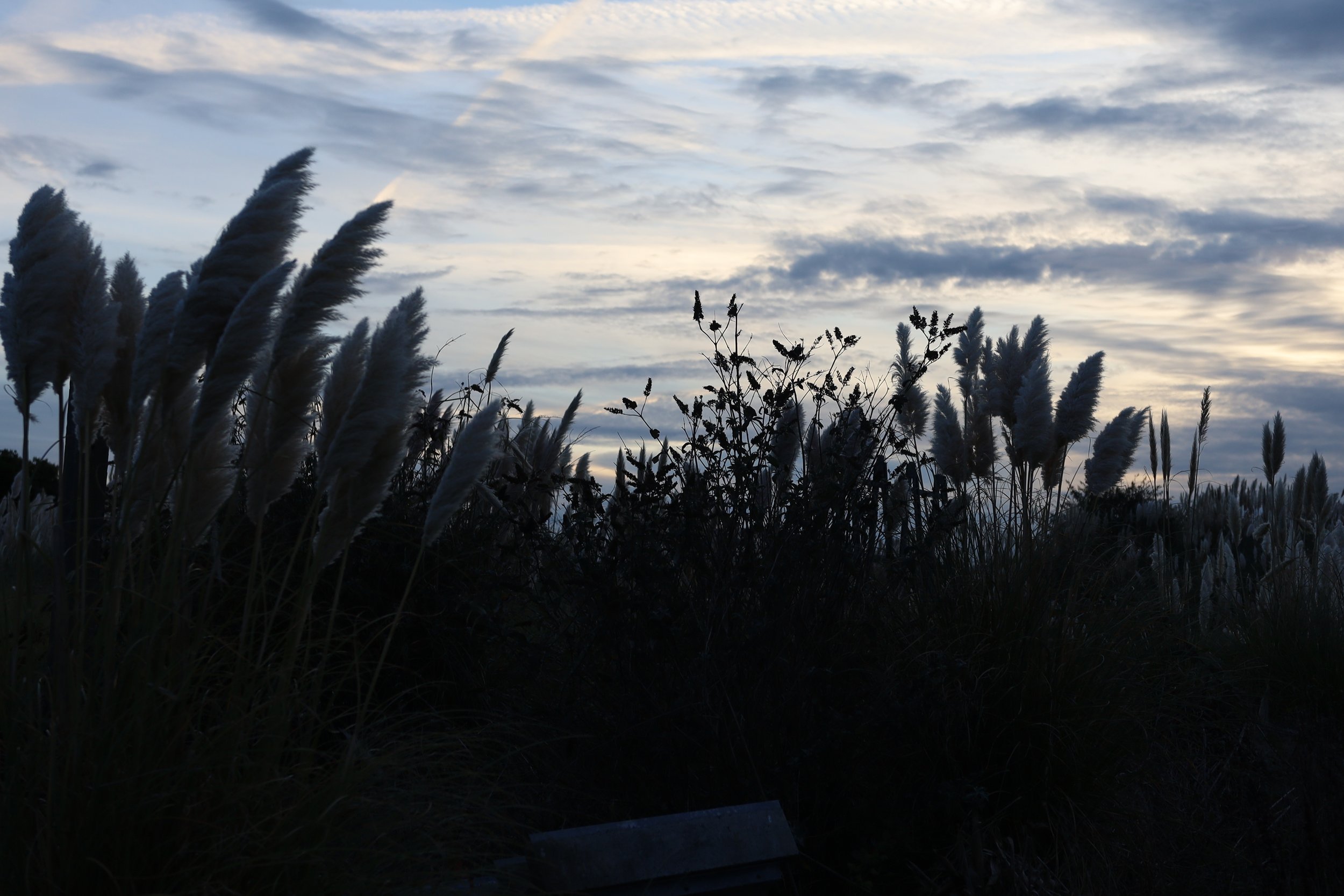
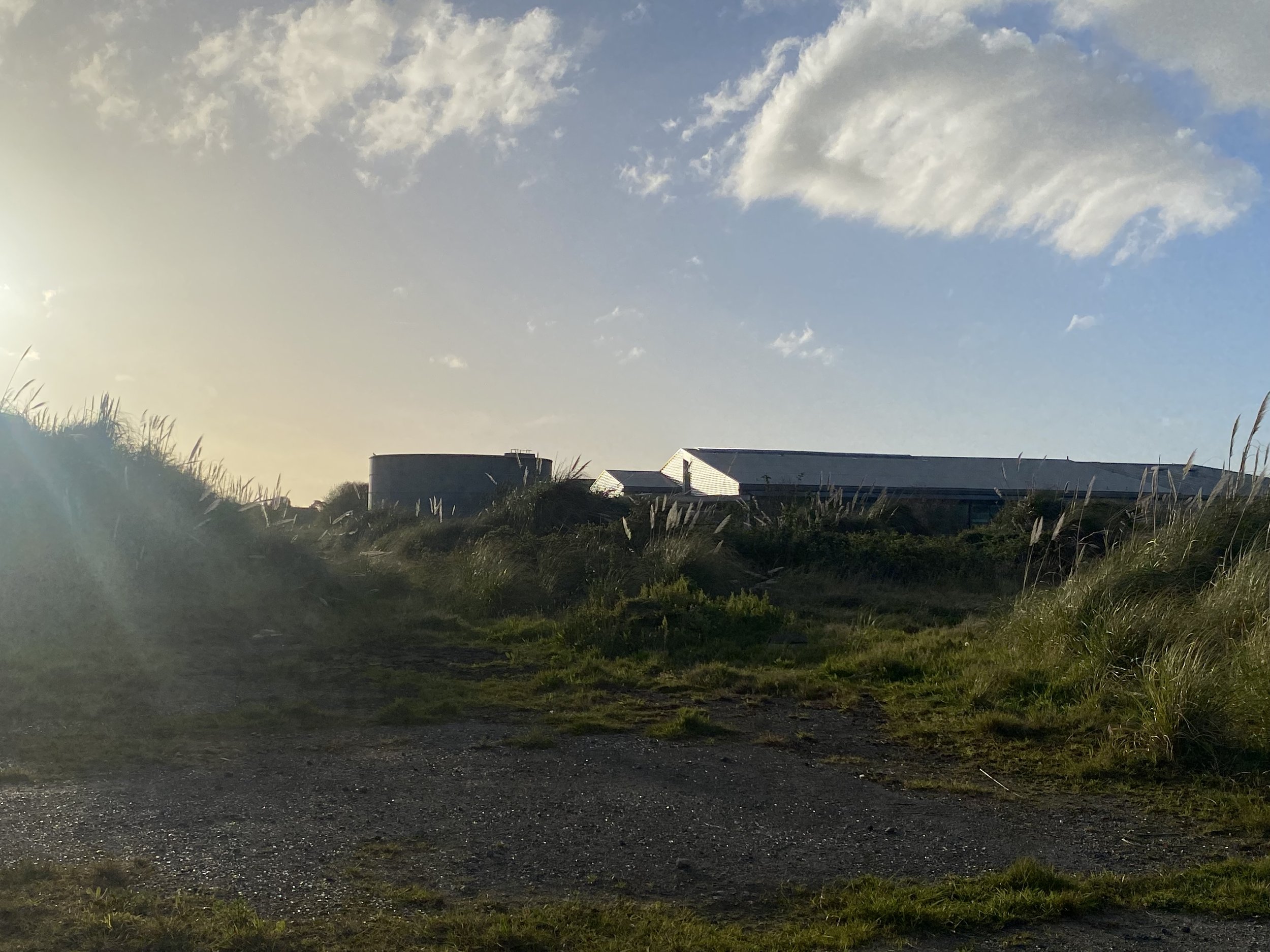
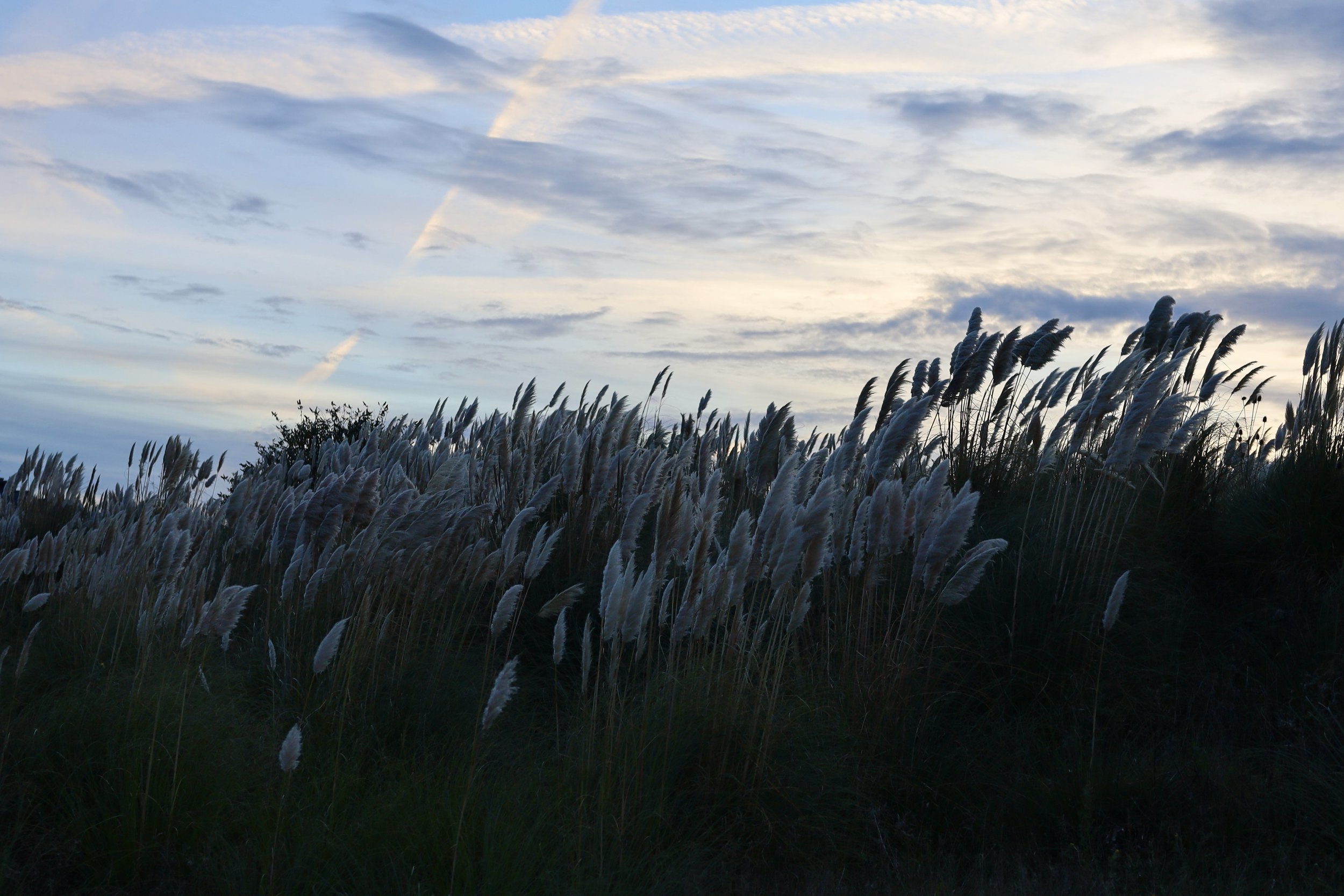
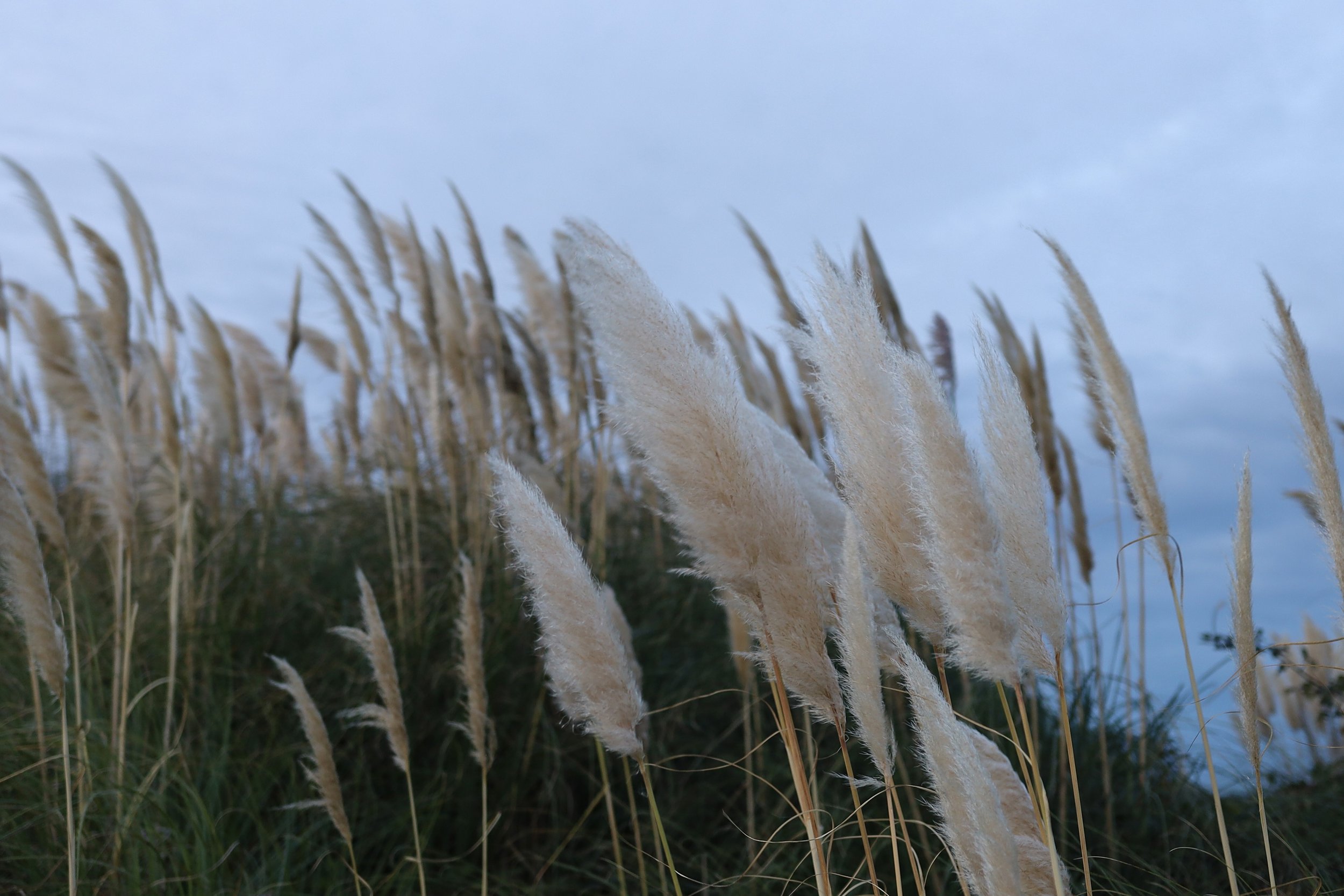
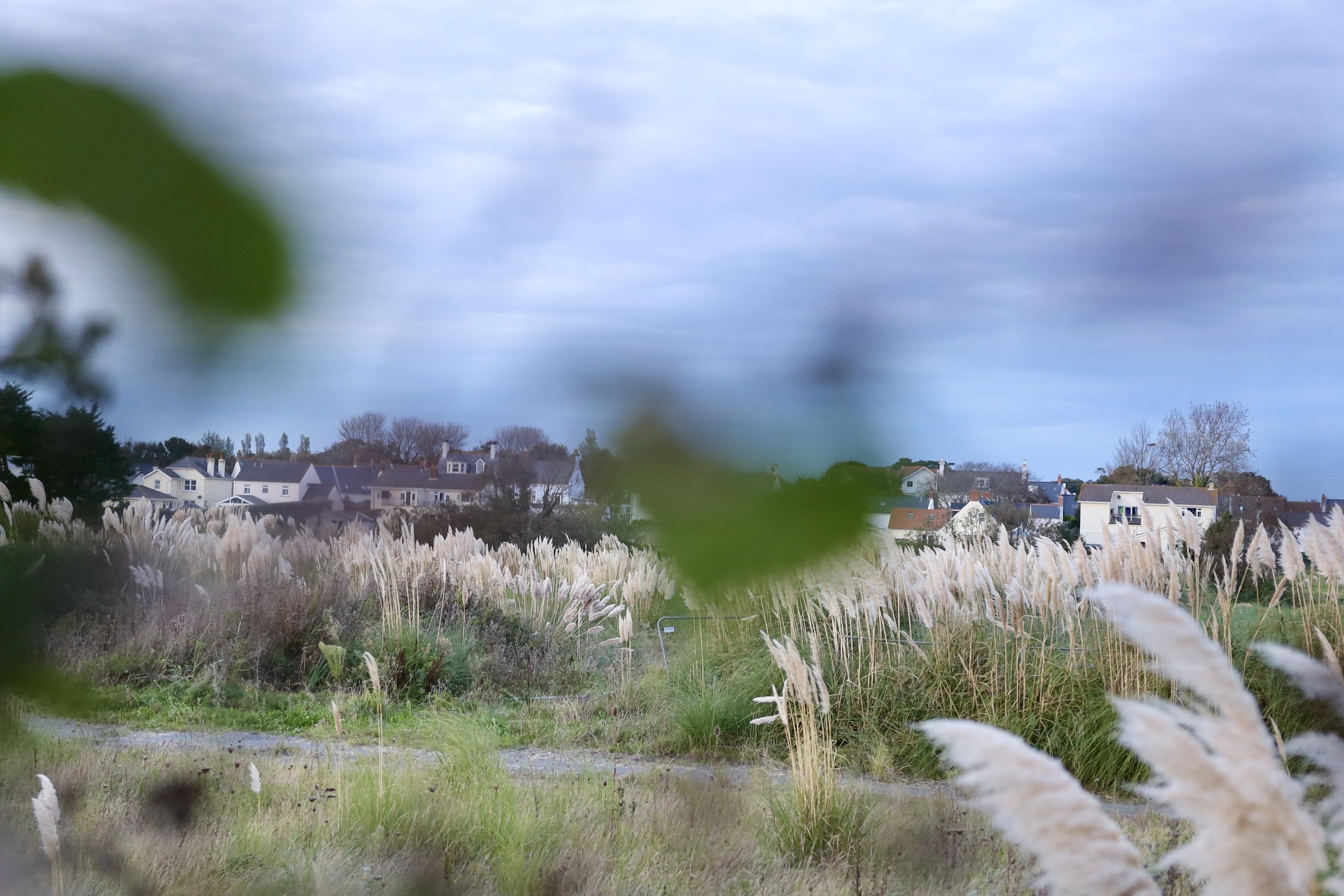
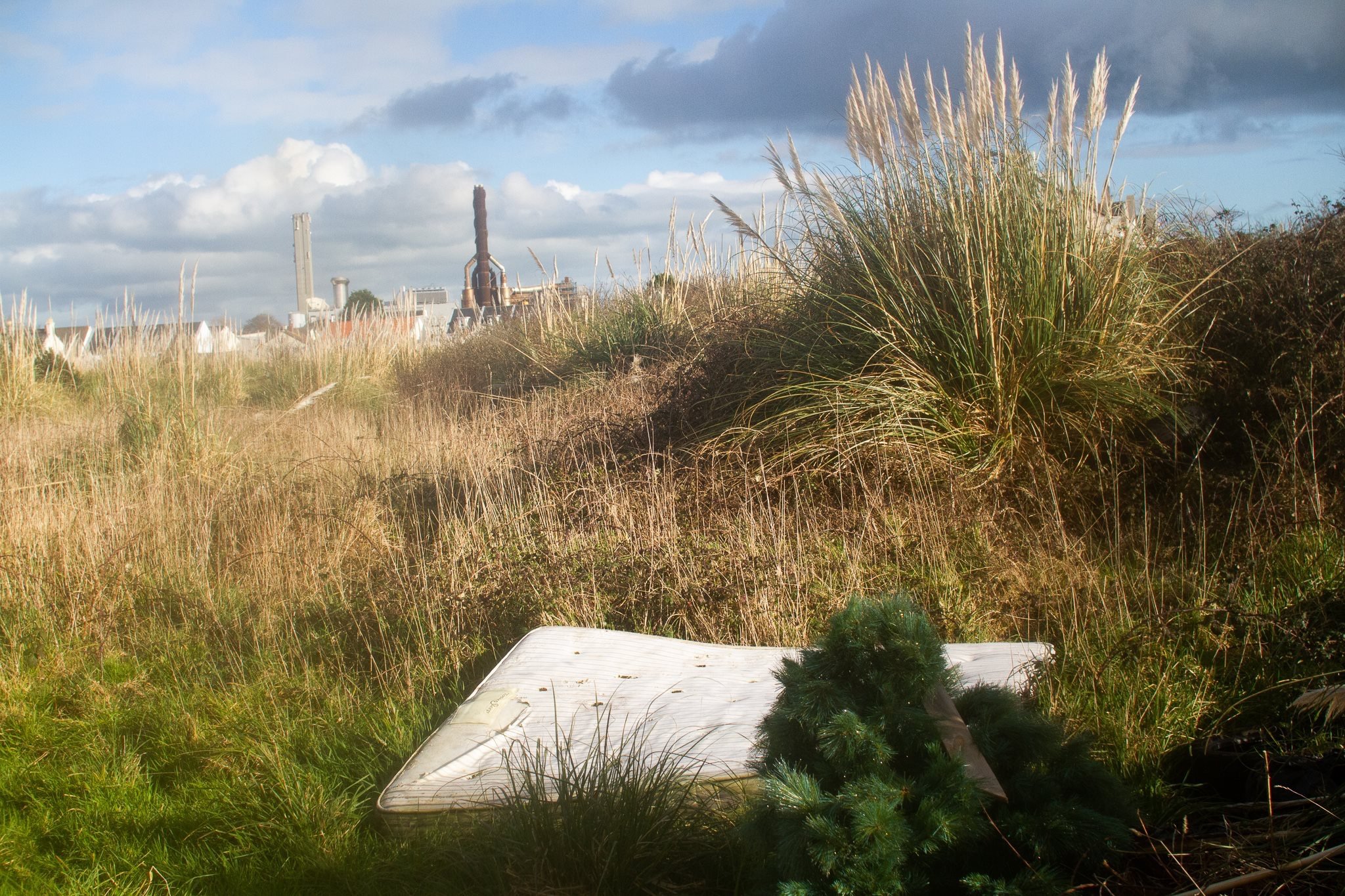
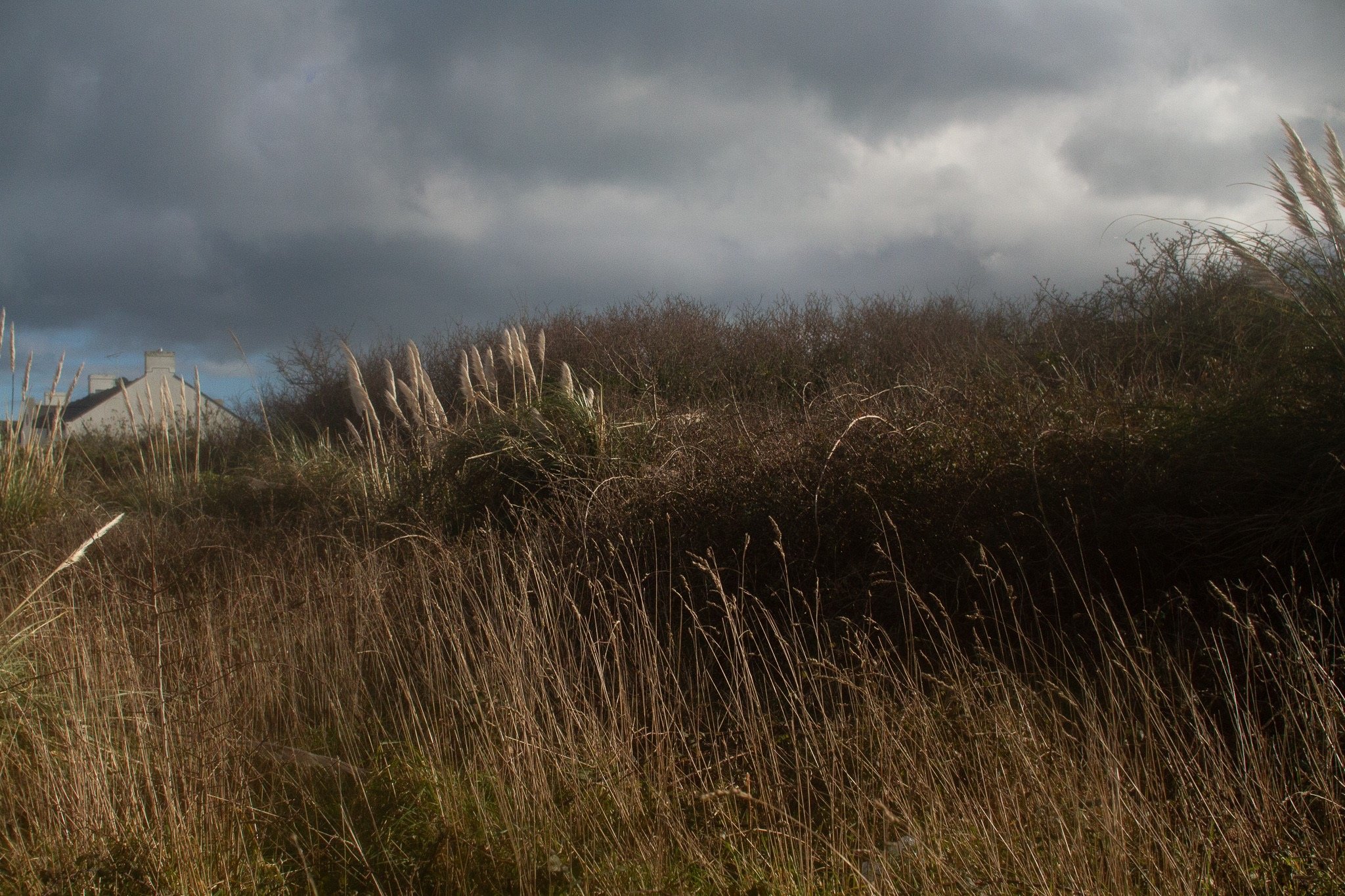
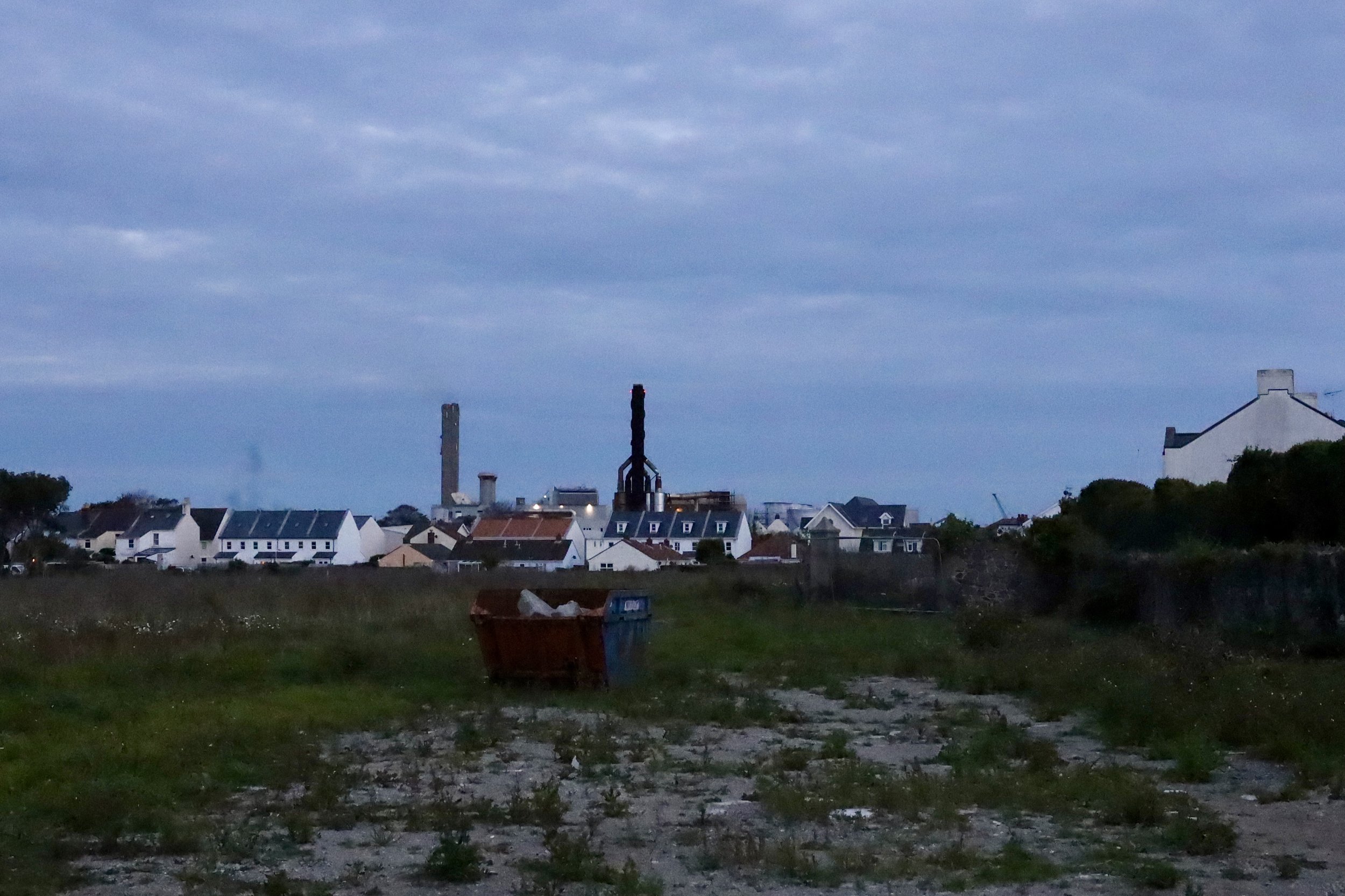
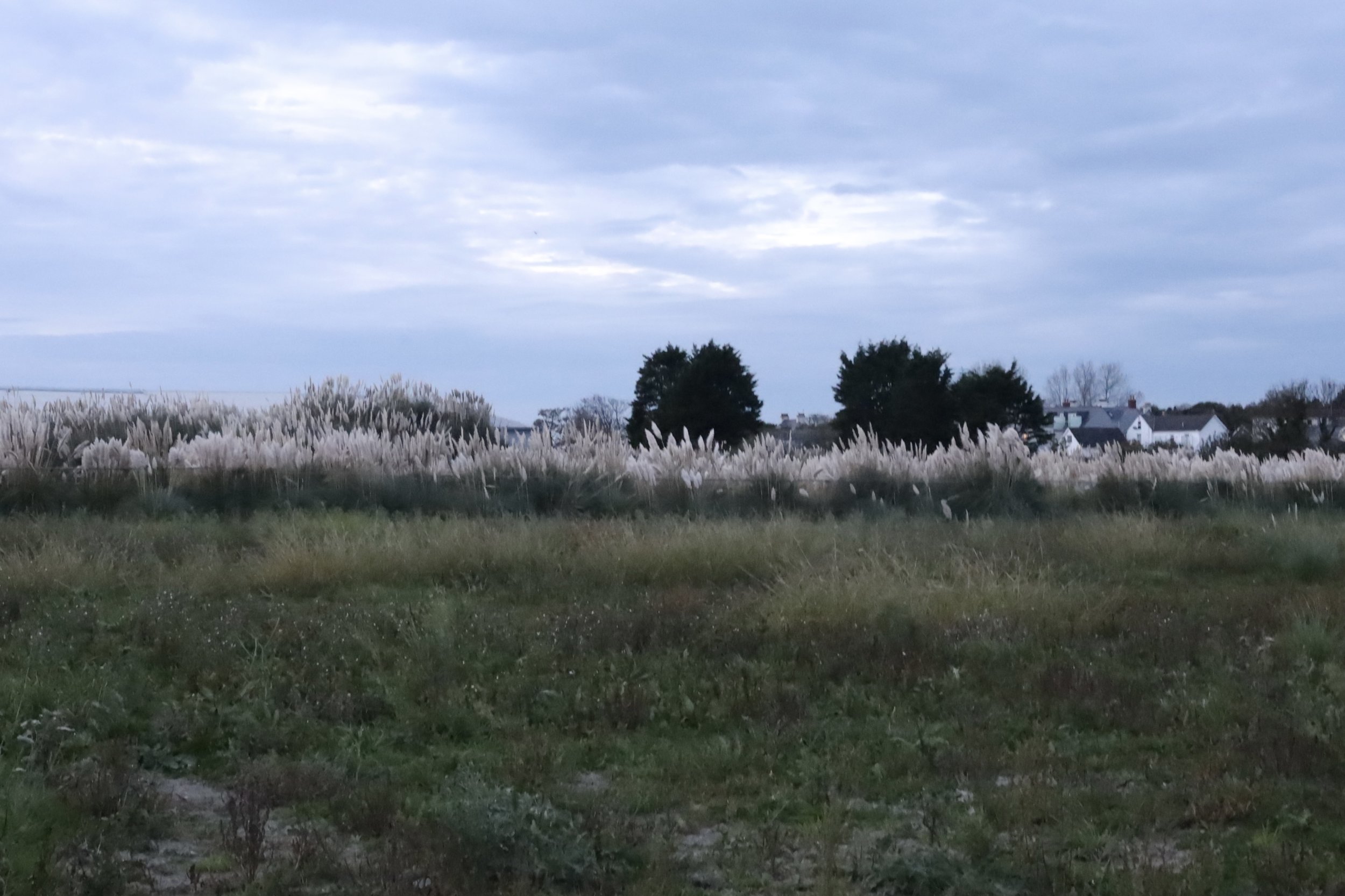
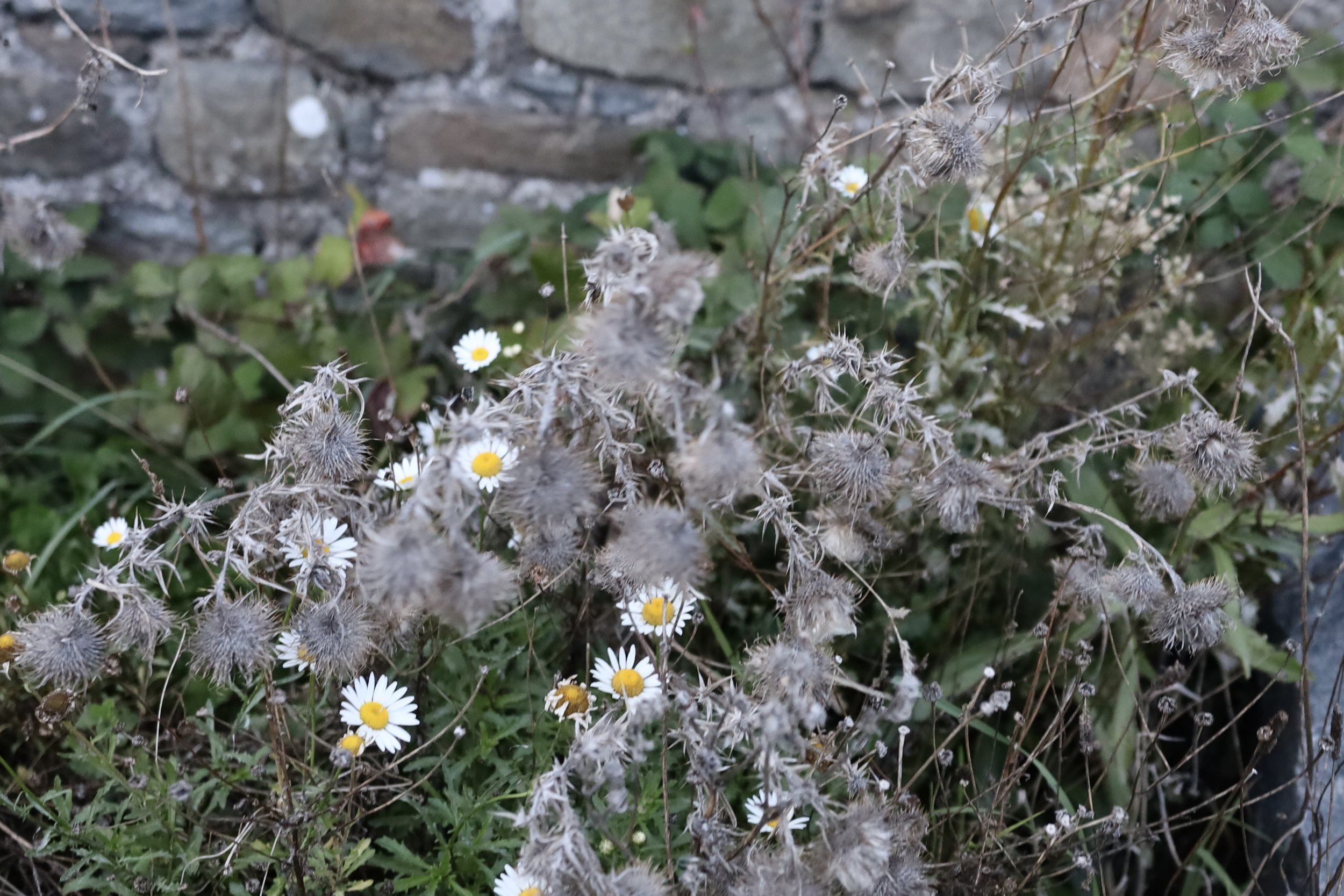

The Salt Pans
This is an ongoing project that I hope will become the basis of an exhibition in 2025.
The Salt Pans is an unkempt 11 acre site behind st Sampson’s harbour in the north of Guernsey. It is covered with rough hillocks studded with seemingly indestructible pampas grass. I have been drawing here for a couple of years as it is a short walk from my home and a quiet space to sit in solitude connect with nature.
St Sampson’s harbour and the surrounding area has personal connections. My grandmother’s father ran an ironmongers and blacksmiths shop there on his return from the first world war. My brother is a marine engineer based on the dockside, and my parents live a mile away, beyond the open fields.
From the 1960s to 1980s, the Salt Pans was covered in glasshouses. Tomatoes and cut flowers were sent daily to the UK. When the industry could no longer compete with the Dutch market in the 1990s the site was abandoned and became a dumping ground for mattresses, old vehicles and white goods. It was cleared fairly recently and is now a marshy wasteland. In the autumn of 2024, soil from another site being developed was transported there in order to flatten the topography.
Before 1806, at high tide, Guernsey was separated into two islands by a shallow sea channel - the Braye du Valle. This ran from the Vale church in the north, to St. Sampson’s harbour on the north-east tip. The Salt Pans sat within this marshland, and was used for salt production.
Sea salt was a valuable commodity worldwide as it was used to preserve fish, dairy and other foodstuffs. For centuries before this, salt gathering is known to have taken place in the area. Excavation work by local archaeologists has uncovered finds of containers and other ceramic structures associated with the salt gathering process. Some have been dated to around 100BC /AD100.
Today, although the land has been earmarked for up to 154 new homes, this has stalled. The land is below sea level and the local housing association, quite rightly, will not begin work on the development until the government has formally agreed to build sea defences in the area. While there is a vital need for social housing, with waiting times currently being around 18 months, Guernsey has suffered greatly from habitat fragmentation and loss of biodiversity, so it is sad to see another area of wet meadowland - a haven for insects and meadow plants - disappear forever under tarmac and concrete.